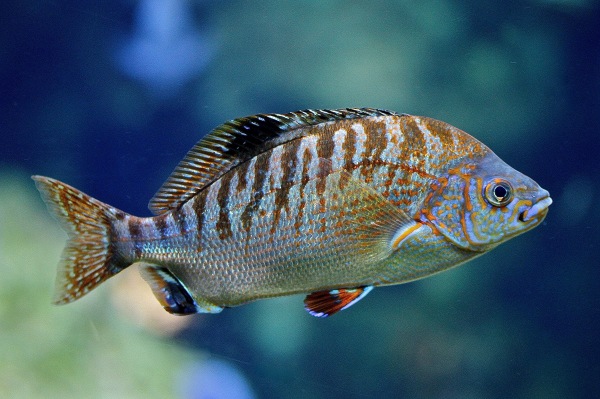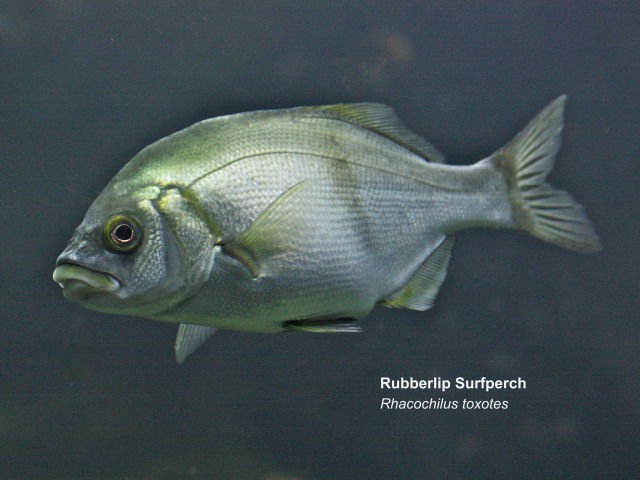TAXONOMY
Kingdom: Animalia
Phylum: Chordata
Class: Actinopterygii (ray-finned fishes)
Order: Perciformes (Perch-likes)
Family: Embiotocidae (Surfperches)
Genus/species; Amphistichus argenteus
GENERAL CHARACTERISTICS: Surfperches are compressed and oval to oblong shaped bodies. The dorsal fins are continuous. The caudal (tail) fin is forked. Base coloration is usually silver, and some species have stripes or bars, which may be dependent on the time of year.
The Barred Surfperch travels in small groups. They are silvery or white; 8–10 rust-colored vertical bars on side with spots in between and no red on their fins.
Length up to 43 cm, max (17 inches), Max published weight: 2,000 g (4.4 pounds).
DISTRIBUTION/HABITAT: A. argenteus are found in Bodega Bay, California to northern central Baja California near sandy beaches in surf and in trawl catches up to 73 m. (240 feet).
DIET IN THE WILD: They feed on crabs; clams, and other invertebrates. Primarily food are sand crabs found in over 90 percent of all stomachs containing food, and made up over 90 percent of the food by volume in a study by University of California. (content.cdlib.org/view?docId=kt2f59n5cq;NAAN=13030&do…)

REPRODUCTION: As with all surfperch, the young are born alive and are relatively large. Mating occurs during the fall and early winter months. The male approaches the female from below; both swim with vents close for 2 or 3 seconds, then separate and repeat the process. Three to 17 young are born the following spring and summer.
MORTALITY/LONGEVITY: Life span: to 9 years.
CONSERVATION: IUCN: Not evaluated.
REMARKS: The Barred Surfperch is an important part of the sport fishery for most surf fishermen in California. Anglers use sand crabs, sandworms, blood worms, shrimp, squid, cut fish.
References
California Academy of Sciences, Steinhart Aquarium, Rocky Coast Main Tank 2019
Ron’s flickr www.flickr.com/photos/cas_docents/5037561446/in/album-721…
Ron’s WordPress shortlink https://fishoncomputer.wordpress.com/wp-admin/post.php?post=5029&action=edit&message=10
Peterson Field Guides, Pacific Coast fishes. Eschmeyer and Hearld 1983
fishbase www.fishbase.org/summary/3622
eol eol.org/pages/225747/details


















